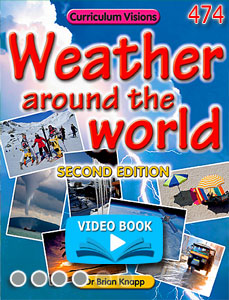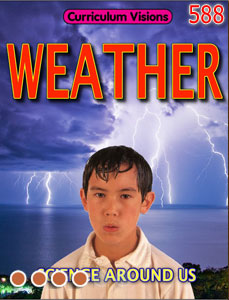Air contains a gas called water vapour. When the air is warm it can hold large amounts of water vapour. When the air is cold it can only hold small amounts of water vapour. During the day the air is warm. It takes up large amounts of water vapour as it evaporates from the surfaces of lakes, rivers and ponds. At night the ground cools down, and cools the air above it. Some of the water vapour cannot be held by the cold air. This surplus vapour condenses to water droplets on cold surfaces such as plant leaves, and we call this dew. But if the air cools further then droplets form in the air itself. If there are so many of them that we cannot see as far as a kilometre, we call that fog.







